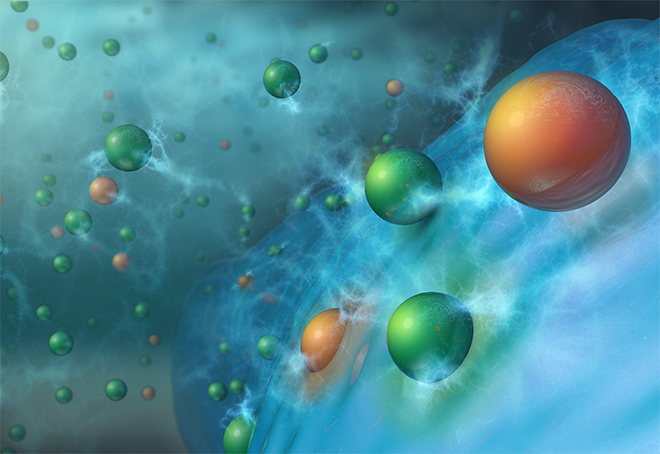Researchers at the DOE’s Argonne National Laboratory have developed a new electrolyte mixture and a simple additive that could have a place in the next generation of lithium-ion batteries that feature silicon anodes. The report findings were published in July in the journal ACS Applied Materials & Interfaces.
Scientists have long seen the silicon anode as the preeminent candidate to replace the current graphite anode. Silicon can store almost ten times the lithium that graphite can. It’s also low-cost, as it’s the second-most abundant material in the earth’s crust, and it is already widely used in computing and telecommunications hardware, so substantial processing technologies already exist.
“But a stumbling block has remained,” noted Jack Vaughey, a Senior Chemist at Argonne. “On cycling, a silicon-based anode in a lithium-ion cell becomes very reactive with the electrolyte, and this process degrades the cell over time, causing a shortened cycle life.”
Researchers around the world are working to solve this silicon degradation issue, and Argonne scientists have developed a unique electrolyte additive strategy to combat the problem. They added a small amount of a second salt containing any one of several doubly- or triply-charged metal cations (Mg2+, Ca2+, Zn2+, or Al3+). These enhanced electrolyte mixtures, collectively named “MESA” (which stands for Mixed-salt Electrolytes for Silicon Anodes), give silicon anodes increased surface and bulk stabilities, improving long-term cycling and calendar life.
“We have thoroughly tested MESA formulations with full cells fabricated with standard commercially relevant electrodes,” said Argonne Chemist Baris Key. “The new chemistry is simple, scalable and fully compatible with existing battery technology.”
During charging, the metal cation additions in electrolyte solution migrate into the silicon-based anode along with the lithium ions to form lithium-metal-silicon phases, which are more stable than lithium-silicon. This new cell chemistry greatly reduces the detrimental side reactions between the silicon anode and electrolyte that had plagued cells with the traditional electrolyte. Of the four metal salts tested in cells, the added electrolyte salts with either magnesium (Mg2+) or calcium (Ca2+) cations proved to work the best over hundreds of charge-discharge cycles. The energy densities obtained with these cells surpassed those for comparable cells with graphite chemistry by up to 50%.
“We have every reason to believe that, if silicon anodes ever replace graphite or constitute the anode in more than a few percent concentration, this invention will be part of it and could have far reaching impact,” said Baris Key.
Source: Argonne National Laboratory


















































